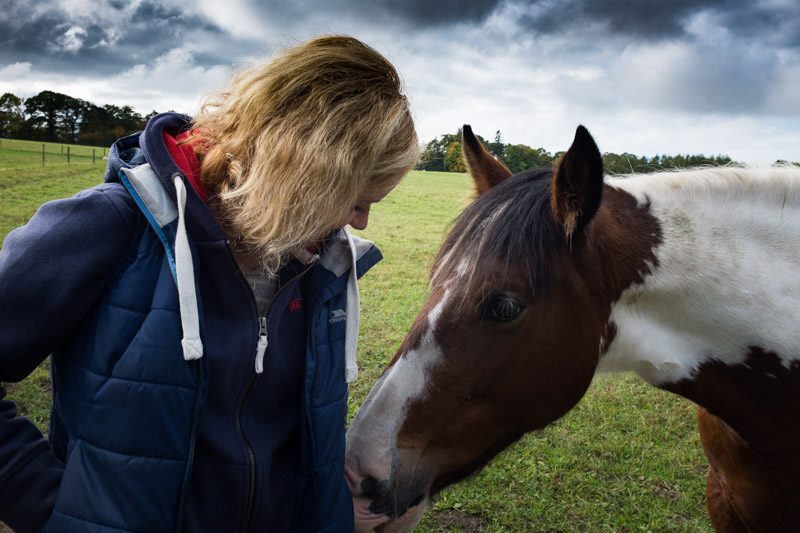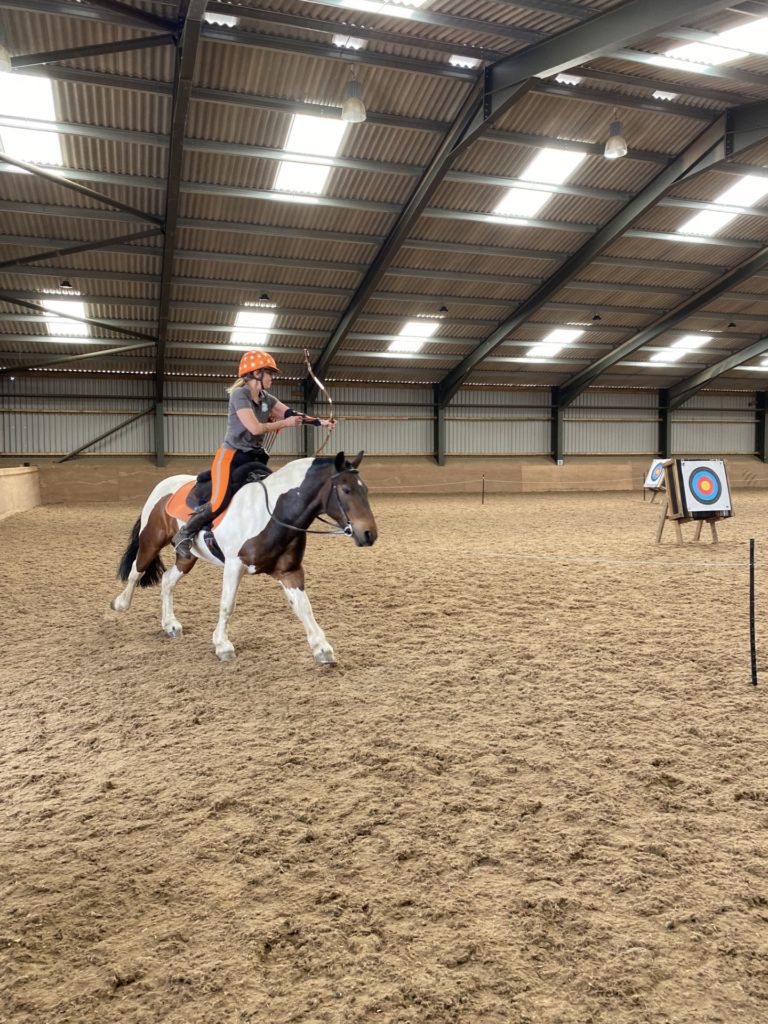We all want our horses to be willing and cooperative participants in any activities that we do with them. How do we achieve this in mounted archery, where there are all sorts of strange and unusual sounds, sights and activities that we want our horses to participate in? We often hear people say ‘oh, my horse could never do that’. But we do not just jump on our horses and start shooting arrows from its back on day one, or we shouldn’t! Just like any other training we need to take it step by step so that the horse learns what we want and that any potentially frightening stimuli are not perceived by the horse as a threat. To do this BHAA recommends following the guidance of the International Society for Equitation Science 10 Principles for Horse Training (https://www.equitationscience.com/ises-training-principles) based on a scientific understanding of how the horse learns.

Principle 1: Regard for human and horse safety
Safety for horse and humans is paramount, and even more so when we bring bows and arrows into the mix. Remembering that horses are large, powerful and flighty is important in predicting how the horse may react and ensuring that no one gets hurt. When starting to introduce a horse to the unusual sights and sounds of archery pay attention to the horse’s behaviour, body language and confidence. Does the horse seem tense and rigid or relaxed, inquisitive or alert? If the horse is starting to become anxious and fearful then take a step back, go back to a stage of training that the horse is comfortable with and wait until the horse is ready before introducing the next steps.

Principle 2: Regard for the nature of horses
Horses are social animals and can feel anxious or uncomfortable when alone. Training your horse with other horses present and thinking ahead to avoid putting your horse in a situation where they might feel isolated is important. Horses may also perceive loud, large or rapid human movements as threatening, so pay attention to the horse’s behaviour and do not try to use dominance in training. This is not part of the normal behaviour of a horse, and you will only make them scared or confused.
Principle 3: Regard for the horse’s mental and sensory abilities
Horses see, hear and think differently to humans. They will be able to see the bow and arrows moving behind them in ways that they might consider threatening if they have not been trained to understand that this is not going to hurt them. Do not expect a horse to learn about archery by being in the same area as an experienced archery horse, horses do not learn by observation, but will need to be taught how to behave individually.
Principle 4: Regard for the horse’s emotional states
Horses are emotional animals and capable of enjoying their training, and participation in archery, but can also feel pain, discomfort or fear during training. It is our responsibility to ensure consistent, good handling so that the horse anticipates a positive experience when it sees the targets, bows and arrows.


Principle 5: Correct use of desensitisation methods
This is a crucial part of ensuring that horseback archery is fun for horse and rider. Horses new to archery should be carefully desensitised to the sounds and sights of archery. This means paying attention to the horse’s behaviour and gradually encouraging the horse to move closer and explore the unusual objects they will not have encountered before. Use of counterconditioning, where any potentially scary object is paired with something positive (treats, scratches, wither rubs, etc), can help a horse to overcome fear of novelty, and to start to anticipate something good happening around archery. Avoid the use of flooding, where the horse is forced to approach and endure exposure to something it is frightened of, this will lead to the horse becoming shut down or unhappy rather than willing to be involved in archery.
Principle 6: Correct use of operant conditioning
Horses will repeat or avoid behaviours depending on the consequences. Reinforcing or rewarding the behaviours we want the horse to show, as quickly as possible after they have been performed, helps the horse to learn to repeat those responses again. Horses should not be punished for doing the wrong thing, it only means we need to do a better job of explaining to the horse what is the right thing, by improving our use of signals or cues, and rewarding the behaviours we want.
Principle 7: Correct use of classical conditioning
Horses very quickly form associations between stimuli. If the sight of targets, bows and arrows become associated in the horse’s mind with pain or fear they will become anxious even before they are asked to take part in horseback archery. Our goal is for our horses to associated archery equipment with something fun and positive, so they become willing participants in the sport.
Principle 8: Correct use of shaping
Horses cannot learn a whole task in a single go, we need to break our training down into small achievable steps and progressively reinforce each step towards the desired behaviour. Each step should be obvious to the horse and easy for them to know what to do so that they can be rewarded. If the horse doesn’t seem to understand what we want, then we need to make the steps smaller and easier so that they do not become confused or frustrated.

Principle 9: Correct use of signals or cues
We might want our horse to canter down the shooting lane when we want, and to continue until we ask it to stop. Teaching a horse to understand a single, consistent signal, for when we want it to go forward or stop, helps the horse understand what we want of it.
Principle 10: Regard for self-carriage
This might seem less relevant to horseback archery. However, a horse that can maintain a gait, tempo, stride length and direction, and carry itself properly without needing lots of signalling or nagging, will make our shooting much better, and our horse happier and healthier.
